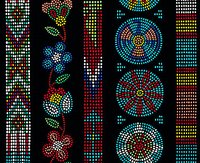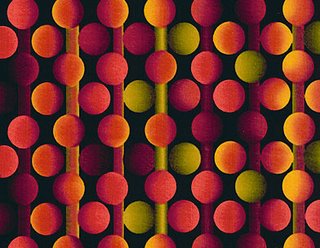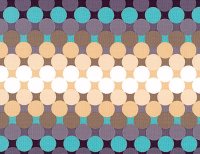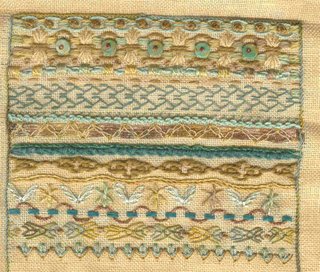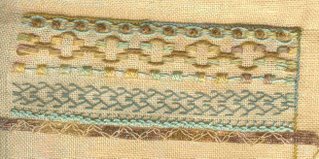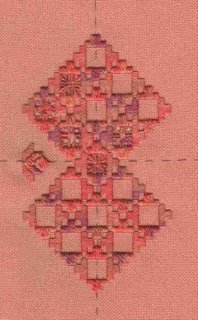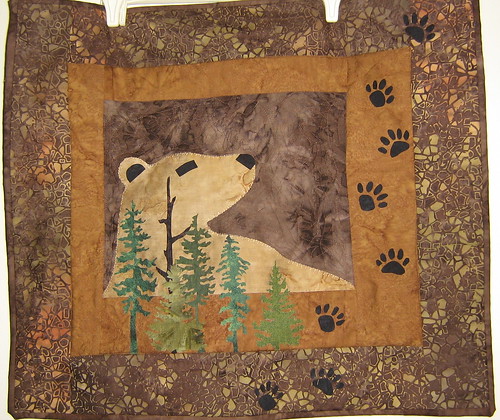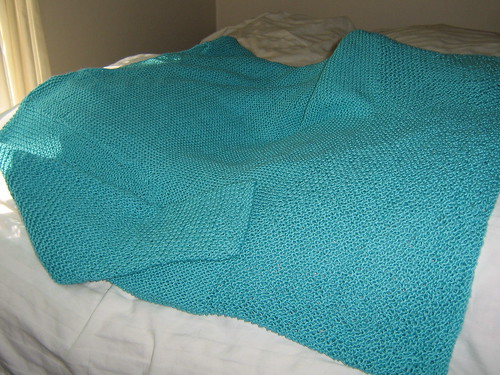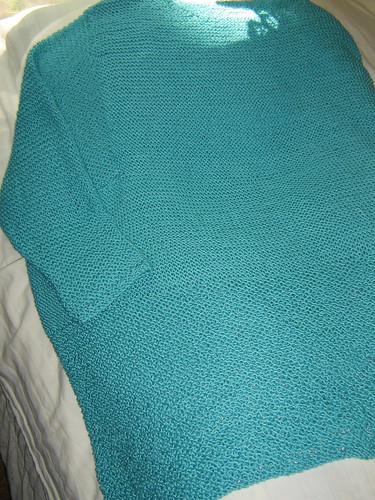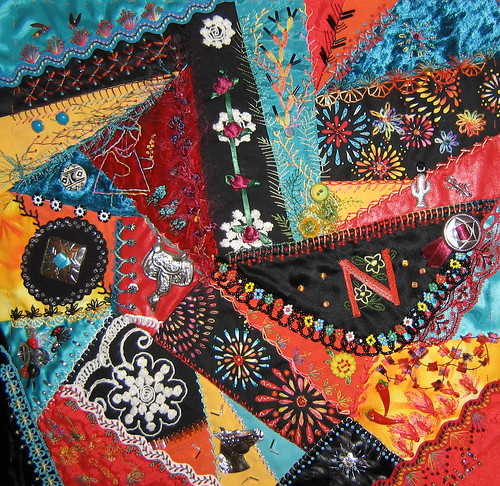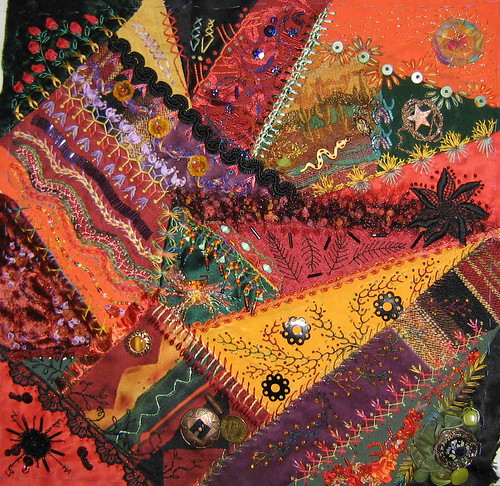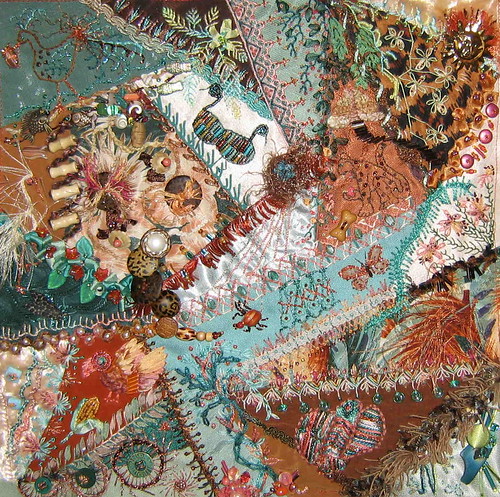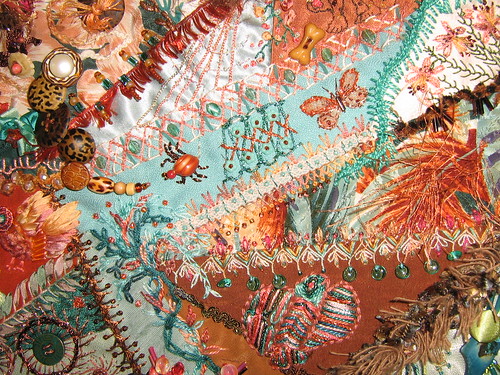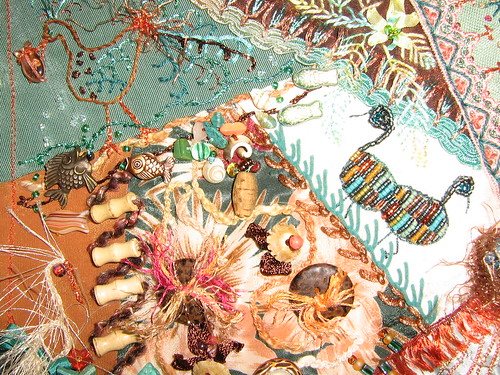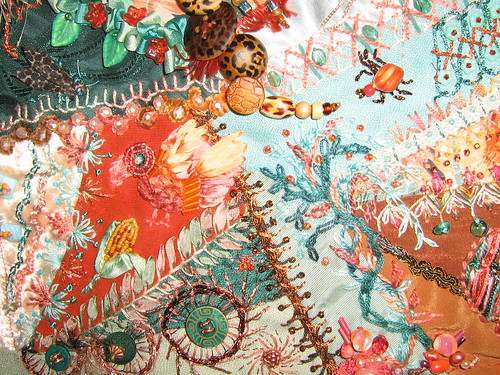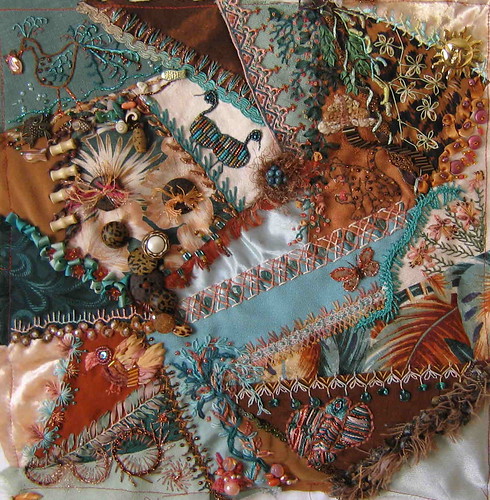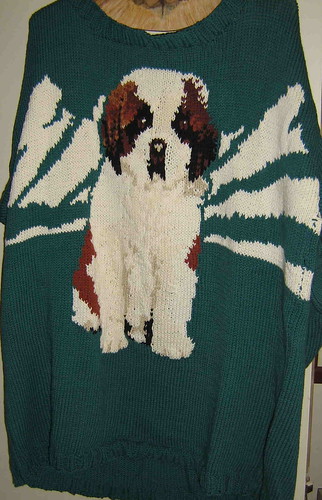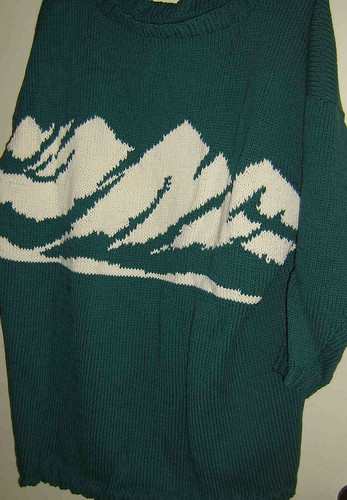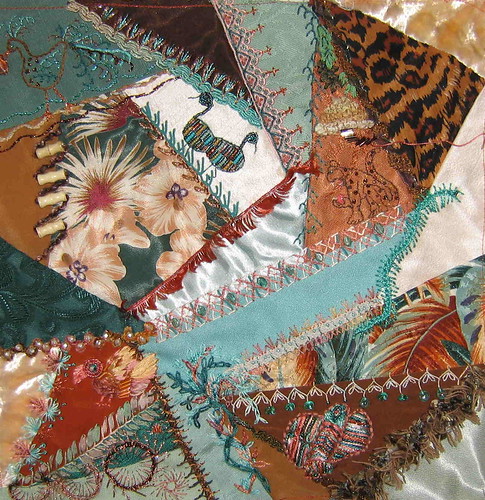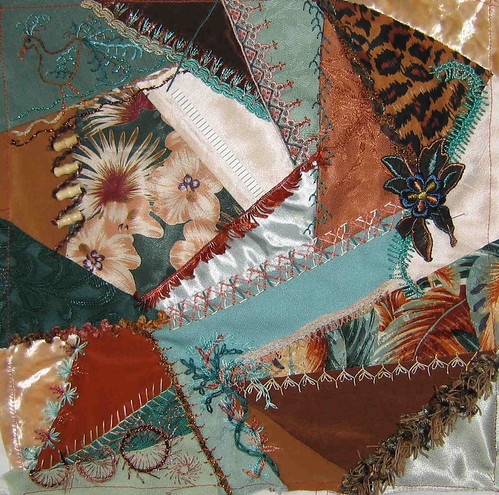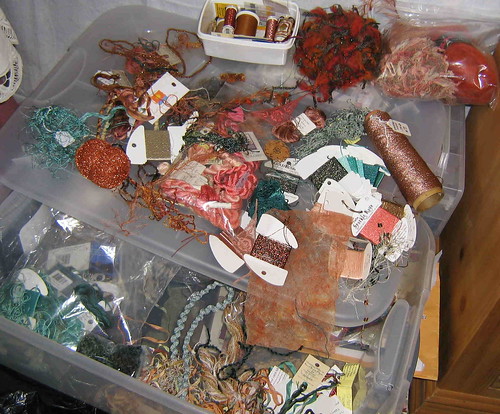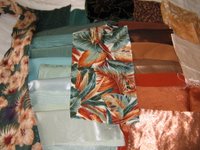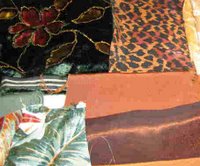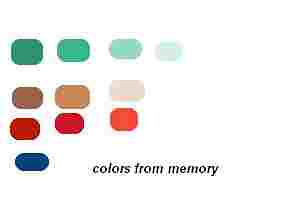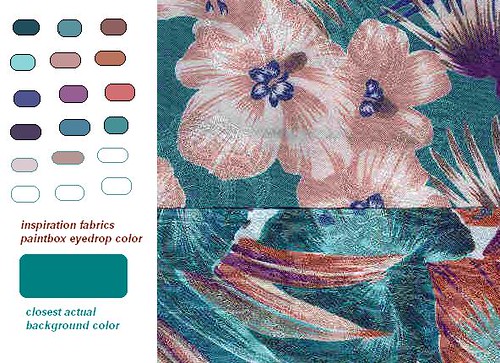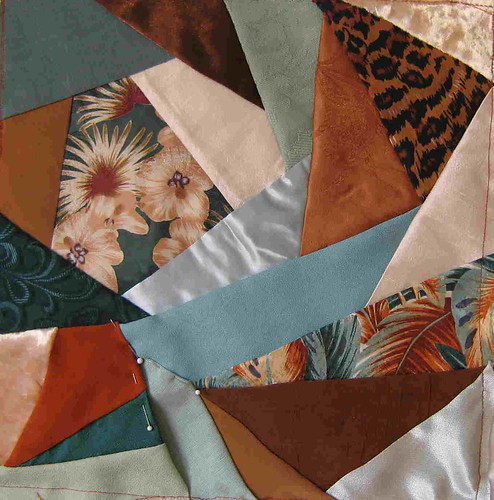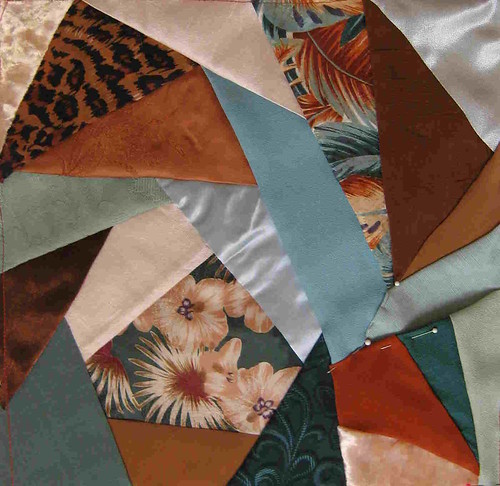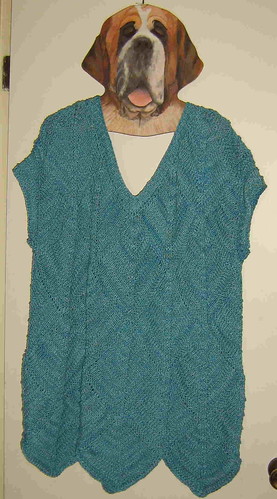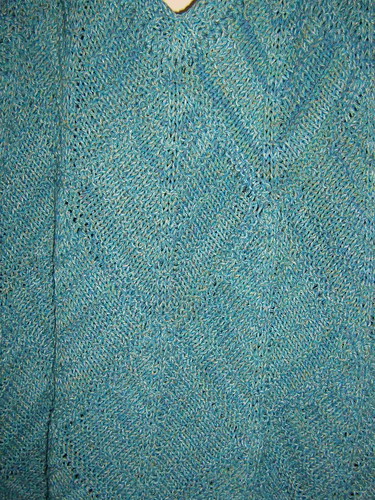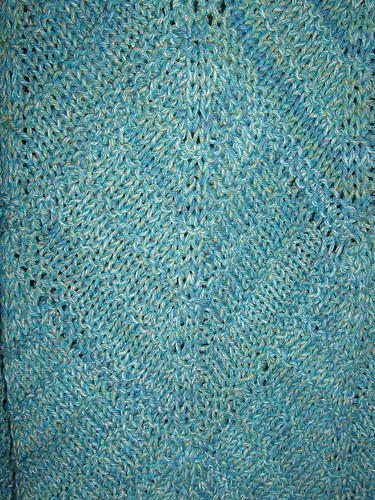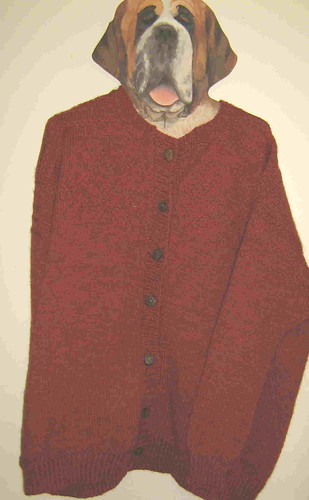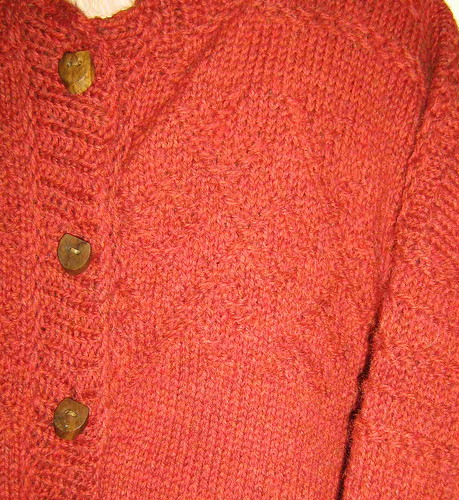I learned to knit when I was 10. I learned to make ski sweaters when I was old enough to realize how much ski sweaters cost. I was a precocious 11 or 12. My mother took me to a knitting store where I could pick out yarn and have assistance in making my first sweater, a
raglan-sleeved, cabled cardigan in bright turquoise, worsted wool with Norwegian heart buttons. It turned out well, I wore it often, but I gave it to my college roommate (who had ski pants that matched perfectly) in exchange for weekend rides to a ski resort.
I enjoyed knitting from that first sweater on, already realizing the theratpeutic benefits of the
craft along with the resulting wardrobe of Nordic style ski sweaters, all of which I still have! I'm thinking about fulling them and recycling them into something new. We'll see. This story is dragging on. The point I wanted to make is that when it came to knitting I was very confident.
I could interchange yarns, I could duplicate almost any sweater I saw, and I even designed one or two for myself. I could recognize quality yarn and knew how to shop for it. Then I stopped.
Kids were gone. I didn't ski anymore (no longer lived near mountains), and I had other interests that occupied my time and money. I simply stopped knitting for almost 20 years.
I wondered why I'd stopped and reflected that maybe I was no longer challenged. You can take your finger out of your mouth now. You are right, I was full of it! And I found out just how full
when I took up knitting again. I really wanted a St. Bernard sweater, and I was convinced I could make it nicer than the ones I saw and for less money. I sent for a pattern. Intarsia? What's that? Oh, picture knitting, using lots of colors. I can do
that. DK weight? Hmpff,
whatever. I know how to change yarns. It's a ski sweater, right? Gotta be worsted or thereabouts.
Undaunted, I started to look for yarn. I had never knit with anything other than wool. I deplored synthetics. I decided I would knit in cotton so I could wear the sweater year round.
Even though I asked for advice, I was so darn sure I knew more than they did. Arrogance does not begin to describe my attitude. Finally I decided on a cotton blend, and owing to its availability, reasonable price and extensive color selection (I needed a kadjillion shades it seemed), I went with Brown Sheep's Cotton Fleece.
Started right in after a token swatch. What, me swatch? I always knit to guage, maybe a little
looser, but I want the sweater a little bigger. Evens out, right? Of course, I'm always right when it comes to knitting. Oh, and I'll just do this on circular needles like I've always done. No seams for me. Of course as I come to the color changes, I realize knitting in the round is a very bad, no, stupid idea. What was I thinking. I frog and begin again. Works up quick. I love knitting. Why oh why did I ever stop. I finish half the front and hold it up to me for a fit check in the mirror. Umm, it seems to already be the full length of the sweater, and if I pull it around me I think the sides might meet. Rip-it. Rip-it.
Dropping down 3 (or was it 4?) needle sizes later, the fabric in my swatch is getting rather firm and is still not to given guage, which is okay because I want it a tad bigger. I'll spare you the rest, especially about the intarsia part which I was trying to do carrying the yarn over in the back; ie, entirely wrong! I finished the sweater. I changed the ribbing and created a larger
neck opening. I made it tunic length. I made one ugly sweater. Blocking made it worse.
The sweater was so heavy it continued to grow every time I picked it up. I actually wore it
in public a time or two. I anticipated compliments when strangers approached me only to
cringe when they spoke, "Excuse me, you have a hole in your sweater. You might want to catch it before..." More holes than Swiss. And I wove everything so carefully...
Maybe I'll toss this puppy in the washer some day. It won't felt, but maybe it'll shrink.
I came to loathe Cotton Fleece even though it wasn't the yarn's fault. I really just didn't care for its properties. I will probably never use it again, so today I offered my leftover skeins free to others who wanted to try it. They may or may not like it. But at least they won't have to pay to find out. I do not consider the project a waste of time and money. I did everything possible
wrong even though I knew better. I guess I was complacent enough to think it didn't matter.
I learned a much needed, priceless lesson in humility.
It was 6 or 7 years ago that I knit that St. Bernard sweater. One of these days I will do it over
in an appropriate yarn of the appropriate weight in the appropriate technique, and I will follow the designer's excellent directions. I will not be cocky. I will reinforce the lesson.
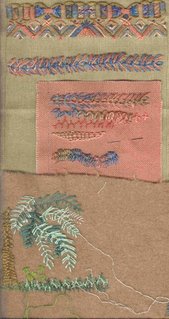





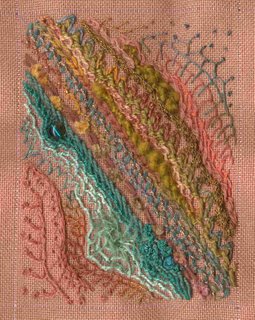
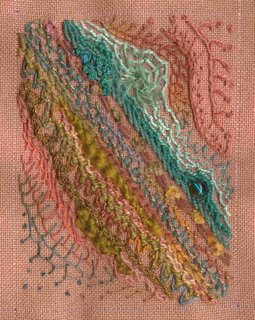
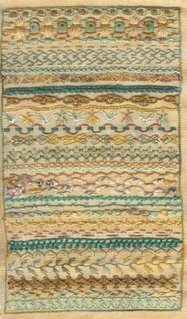
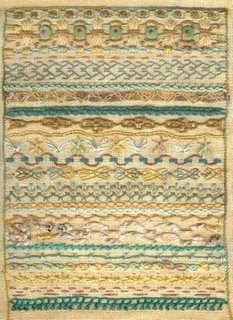

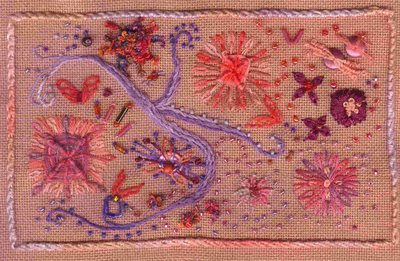
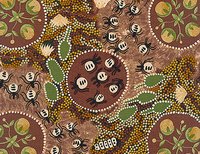
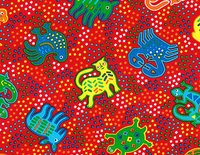
 .
.